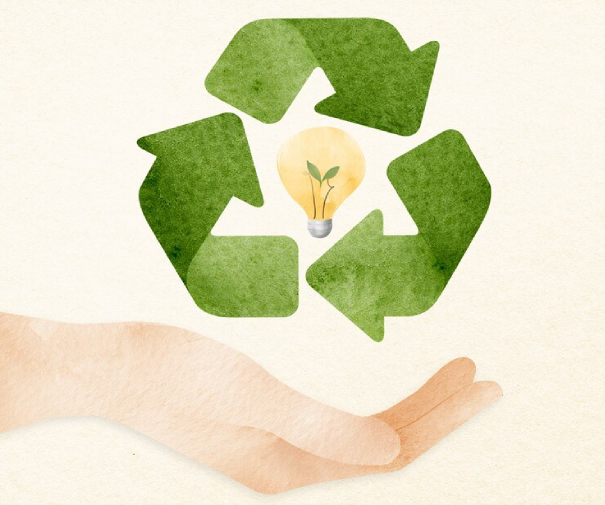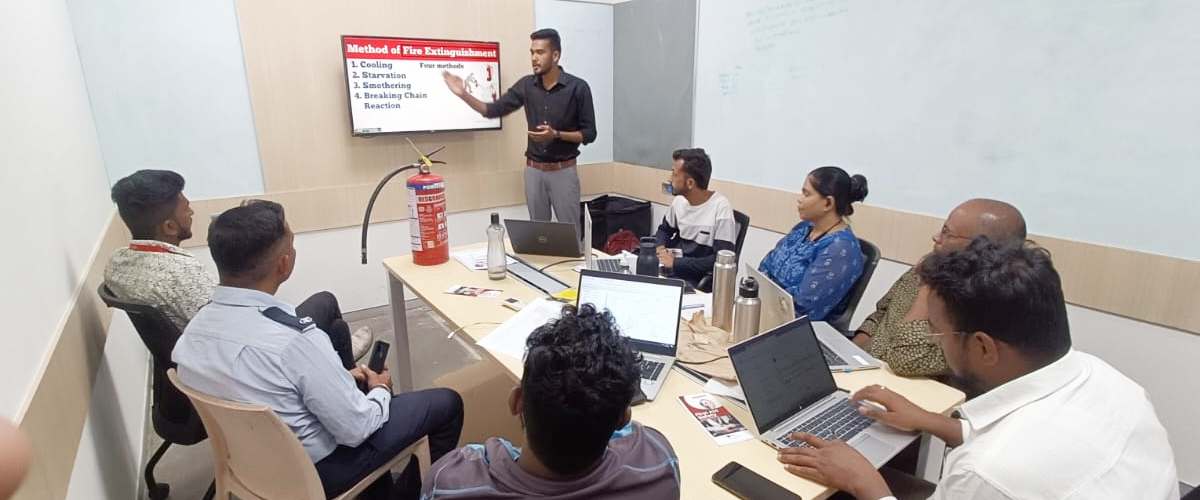What is Sustainability?
Sustainability is the capacity to fulfill current needs without sacrificing the ability of future generations to satisfy their requirements.
Sustainability is the balance between the environment,equity, and economy
Ensuring sustainability entails carefully managing the interplay between social, economic, and environmental factors to guarantee that our present actions do not adversely impact the wellbeing of people, the planet, or its resources over the long term.
Why is sustainability important in today’s world?
The benefits of sustainability extend globally, encompassing reductions in carbon footprints and the release of toxins and pollutants into the environment. As the impacts of climate change become increasingly evident, the imperative to pursue sustainable solutions has never been more crucial. This not only aims to foster a cleaner and healthier world but also holds the potential to avert catastrophic environmental changes in the future.
The pillars of sustainability
- environmental stewardship
- social responsibility, and
- economic viability
- provide a framework for guiding actions toward a more sustainable future.

Integral components of this transformative journey include the conservation of resources, biodiversity preservation, responsible water and energy management, as well as sustainable agriculture
Key elements of a sustainable environment include
Conservation of Resources: The conservation of resources entails utilizing natural resources efficiently and responsibly, avoiding overexploitation, and promoting conservation efforts. This includes adopting sustainable practices in areas such as water use, energy consumption, and raw material extraction
Biodiversity Conservation: Prioritizing the protection of biodiversity, a sustainable environment recognizes the significance of diverse ecosystems for ecological balance, resilience, and the wellbeing of various species, including humans.
Pollution Prevention: Aiming to minimize pollution, whether in the form of air, water, or soil pollution, sustainable environments involve reducing emissions of harmful substances, properly managing waste, and promoting cleaner production methods.
Renewable Energy: A key component of a sustainable environment involves transitioning to renewable energy sources, such as solar, wind, and hydropower, which are considered more environmentally friendly and have a lower impact on the climate compared to traditional fossil fuels.
Responsible Land Use: Prioritizing responsible land use planning, sustainable environments aim to prevent deforestation, soil degradation, and habitat destruction. This includes implementing measures to protect natural landscapes, promote reforestation, and preserve critical habitats.
Social Equity: Sustainability extends beyond environmental considerations to encompass social well-being. A sustainable environment promotes social equity by ensuring that the benefits and burdens of environmental policies are distributed fairly among different communities and social groups.
Can it be Achieved?
e.g. This is a key step released by the EU Commission
In 2018, the EU Commission released six key transformations aimed at better-achieving sustainability by the current target year of 2050, and if properly implemented, these steps will contribute to that goal.
Sustainable development presents a societal challenge, not solely an environmental one; consequently, improvements in education and healthcare are essential to attain higher income and make better environmental decisions.
The decarbonization of the energy industry, achieved through the utilization of clean energy resources and renewable processes, will be necessary to ensure the provision of clean and affordable energy for all.
Ensuring access to food and clean water for all, along with protecting the biosphere and oceans, necessitates the establishment of efficient and sustainable food systems. This can be achieved through increasing agricultural productivity and reducing meat consumption.
Smart cities involve transforming settlement patterns for the benefit of both the population and the environment, a goal that can be achieved through the implementation of ‘smart’ infrastructure and internet connectivity.
A digital revolution in science, technology, and innovation would be required to support sustainable development, as it is hoped that the world will use the development of Information Technology to facilitate sustainability.
Key aspects of sustainability include
Environmental Stewardship: Ensuring the responsible use and management of natural resources,
minimizing pollution and waste, and protecting biodiversity.Social Responsibility: Promoting social equity, justice, and inclusivity. This includes addressing issues such as poverty, inequality, and access to education and healthcare.
Economic Viability: Building and supporting economies that are resilient, inclusive, and provide opportunities for all while avoiding practices that lead to exploitation or unsustainable consumption.
Sustainable practices
Sustainable practices can be implemented across diverse sectors, encompassing energy production, agriculture, transportation, and manufacturing. The overarching objective is to establish a harmonious and balanced relationship between human activities and the natural environment, to foster long-term well-being for both current and future generations. The concept of sustainability is frequently linked to the United Nations’ Sustainable Development Goals (SDGs), which represent a set of global objectives designed to address a range of social, economic, and environmental challenges.
How do businesses benefit from implementing sustainability practices?
Sustainability practices yield environmental, economic, and social benefits for society as a whole. By making the environment cleaner and protecting future generations, everyone benefits from these practices, contributing to improved health through pollution reduction and safeguarding the climate by avoiding harm to the environment.
The overarching benefits of sustainability provide sufficient reason for businesses to adopt sustainable practices, and there are additional advantages for companies, such as reduced energy and operating costs achieved through the utilization of renewable energy,
recycling, and waste reduction. Moreover, these sustainable businesses foster stronger customer loyalty, particularly as consumers increasingly seek environmentally and socially responsible business practices.
What are some easy ways to incorporate sustainability into everyday life?
You can incorporate sustainability into your own life by becoming a ‘conscious consumer. Examining the sustainability practices of the businesses you patronize and advocating for improved practices is a direct way to integrate sustainability into your daily life.
Additionally, you can take other actions, including refraining from using plastic bags for shopping, transitioning to a paperless approach for your documents, avoiding single-use items, utilizing eco-friendly cleaning products, minimizing food waste, sharing items with your neighbors, and engaging in practices like reusing, recycling, and donating unwanted items.
These are just a few of the practical and easy ways you can incorporate more sustainability into your life.
What is the role of sustainability in economic growth?
Long-term economic growth is not truly achievable without sustainability. While it may be possible to disregard environmental and sustainability concerns, doing so will only result in short-term gains. A resilient and enduring economic and social model is built
when an economy coexists harmoniously with the natural resources essential for numerous goods and services. This entails responsible management of water, waste, energy, and food.
How does sustainability impact our health and well-being?
Our mental and physical health is inherently connected to both our natural and built environments. Promoting sustainability not only fosters better environments that support our well-being but also conserves resources for future generations, ensuring that social justice and a high quality of life can be enjoyed by people in the future.
Can a business be profitable and still be sustainable?
Evidence indicates that sustainability correlates with higher levels of profitability. According to an April 2023 report from Bain & Company and Eco Vadis, which examined 10,000 companies across various countries and sectors, those actively striving to enhance their societal and environmental impact generally experienced growth in revenue and earnings. The report also noted that there was “no strong negative correlation” for companies prioritizing sustainability efforts.
Sustainability is more than simply “doing the right thing” for society; it can also result in greater profits,reduced costs, enhanced employee satisfaction and loyalty, and positive brand association among your customer base.
How to achieve a sustainable environment
Achieving a sustainable environment demands a holistic and integrated approach that recognizes the interconnectedness of environmental, social, and economic factors. It is a global endeavor that entails collaboration among individuals, communities, businesses, and governments to forge a world capable of supporting both current and future generations.
To achieve a sustainable environment involves collective efforts across various sectors, including individuals, communities, businesses, and governments. Here are some key strategies and actions that can contribute to the goal of sustainability:
Raise Awareness and Education
Increase public awareness about environmental issues and the importance of sustainability.
Promote environmental education in schools and communities to foster a sense of responsibility and understanding.
Conserve Energy
Use energy-efficient appliances and lighting.
Promote and invest in renewable energy sources like solar, wind, and hydro power
Implement energy conservation practices in homes, businesses, and industries
Reduce, Reuse, Recycle
Minimize waste by adopting the principles of reduce, reuse, and recycle.
Encourage the use of recycled materials in manufacturing processes.
Implement effective waste management practices at the community and industrial levels.
Sustainable Agriculture
Promote organic farming and agroecological practices.
Support local and sustainable food systems to reduce the environmental impact of food production and transportation.
Implement water-conserving and soil-friendly agricultural techniques.
Preserve Biodiversity
Protect natural habitats and create wildlife corridors to maintain biodiversity.
Avoid overexploitation of resources and regulate hunting and fishing practices.
Support conservation initiatives and protected areas.
Responsible Water Management
Conserve water through efficient use and avoid unnecessary wastage.
Implement water recycling and reuse systems
Protect water sources from pollution and over-extraction.
Promote Sustainable Transportation
Encourage public transportation, cycling, and walking.
Invest in electric and hybrid vehicles to reduce emissions.
Develop infrastructure that supports sustainable mobility.
Green Building Practices
Adopt green building standards and certifications
Design and construct energy-efficient and environmentally friendly buildings.
Promote sustainable building materials and practices.
Policy and Regulation
Advocate for and implement policies that support sustainability at local, national, and international levels.
Enforce regulations that penalize environmentally harmful practices and incentivize sustainable alternatives.
Corporate Responsibility
Encourage businesses to adopt sustainable and ethical practices.
Implement corporate social responsibility (CSR) initiatives that focus on environmental conservation.
Support and invest in environmentally responsible companies.
Community Engagement
Foster community participation in sustainability initiatives.
Support local projects that promote environmental conservation and community resilience.
International Cooperation
Collaborate with other nations to address global environmental challenges.
Support international agreements and initiatives aimed at promoting sustainability, such as the Paris Agreement.
Achieving a sustainable environment requires a multifaceted and collaborative approach. It involves making conscious choices in our daily lives, advocating for policy changes, and fostering a collective commitment to preserving the planet for future generations.
Sustainability Global Involvement
Global involvement is crucial because environmental challenges transcend borders. International agreements, such as the Paris Agreement and the United Nations Sustainable Development Goals, provide a roadmap for collaborative efforts. The exchange of knowledge, technology transfer, financial support, and collective decision-making contribute to a shared commitment to address pressing issues like climate change, pollution, and resource depletion.
Sustainability Corporate Responsibility
Furthermore, corporate responsibility, civil society engagement, and individual choices play pivotal roles in shaping a sustainable world. Green practices, ethical consumption, and investments in sustainable projects contribute to a more environmentally conscious global community.
Let’s take a Pledge to achieve a sustainable environment
In conclusion, sustainability is a holistic and interdependent concept that addresses the urgent need to balance human activities with the health of the planet and the well-being of present and future generations. Achieving sustainability requires a collective effort at local, national, and global levels, involving individuals, communities, businesses, and governments.
In essence, sustainability is not merely a goal but a continuous process of adaptation, innovation, and responsible stewardship. It necessitates a paradigm shift in how we live, work, and interact with the environment. As we navigate the challenges of the 21st century, embracing sustainability is not just an option—it is an imperative for the health of our planet and the well-being of all its inhabitants. Through collective action, informed decision-making, and a shared commitment to responsible practices, we can pave the way for a sustainable and resilient future.
Contact Us
Kindly call our Experts @ +91 8121563728 / +91 8015527650 or mail us @ kalyan.r@greenworldsafety.com / indumanasa.m@greenwgroup.com
Get Your Query Answered / Get Expert Assistance To Choose the Right Course for You Or Your Associates






